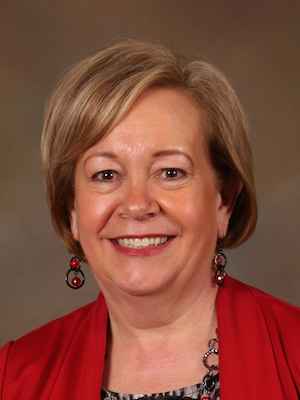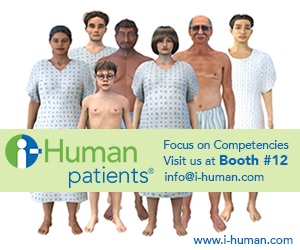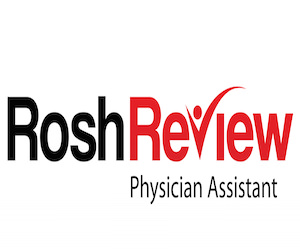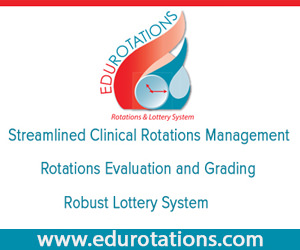Board Candidates

Janie McDaniel, MS, MLS(ASCP)SC
Director at Large Platform Statement
I respectfully declare my candidacy for the Director at Large position on the PAEA Board of Directors. For the past two years, I have served PAEA as a Director at Large and would be honored to continue my service for another two- year term. Prior to serving on the Board of Directors, I served PAEA first as a member of the CASPA Admissions Committee for two years, followed by six years as Chair of the Recruitment and Admissions Council, working alongside many remarkable people to enhance PA Admissions and expand the CASPA service. I was also pleased to serve as faculty for the PAEA Basic Skills Workshop, helping new PA faculty members develop their skills as an educator. The leadership skills that these service opportunities have helped me develop have been invaluable to my professional growth and have enhanced my ability to share my creativity, energy and enthusiasm as a continuing member of the board.
Speaking as a PA educator for over 20 years, this is a pivotal time to be involved in securing the future of PA education and the PA workforce. With the ever-increasing demand for more primary care providers, the need for more PAs has spawned the development of many new and developing PA programs in the country. In order to maintain the solid reputation of PA education, PAEA must support better collaboration between all PAEA member programs, including established, new, and developing programs, in order to assure that community healthcare needs are met without creating a negative impact in the PA workforce. To support this educational growth, PAEA must find innovative strategies to meet the need for clinical rotation sites, as well as the development and mentorship of new PA faculty.
With this surge in PA education, we are also seeing tremendous growth in our PA applicant pool. Unfortunately, the growth in our applicant pool continues to reflect similar demographics year after year and does not represent the ethnic and cultural demographics of the US population. PAEA must commit to developing strategies to increase ethnic and cultural diversity through enhanced recruitment of underrepresented minority applicants and applicants from underserved communities. These recruitment strategies will help our member programs create a future generation of PAs who will return to provide healthcare for their representative communities.
This is an incredible time to be in PA education. With the Board of Directors recent generative work to realign PAEA’s strategic plan to better reflect the association’s goals and priorities, the time is right to take the next step towards becoming an even stronger presence in the healthcare arena. It would truly be an honor to continue my service to PAEA and this constituency as a member of the Board of Directors.
Responses to Association Questions
- What characterizes a high-performing Board member and which of those attributes do you posses that would provide strong contributions to the PAEA board?
To be high performing, a PAEA Board member must be able to understand all sides of an issue and make decisions based on what is best for our member programs, PA education and the PA profession. My extensive experience working with PAEA as chair of the Admissions Council, teaching Pando workshops, realigning PAEA’s internal structure with other members of the Internal Volunteer Structures Workgroup, and serving as a Director at Large for the past two years, in combination with my strong teaching, research and publication history in PA education, allows me to consider issues from different perspectives and make informed decisions about those issues. Other attributes I possess that are needed by PAEA Board members include honesty, respectful collaboration, collegiality and strong ethical standards. By working together and supporting the tenets set forth in the PAEA Strategic plan, the Board can strengthen the future of PA education and set a course that engenders the trust of our member programs. I would be honored to be re-elected to the PAEA Board of Directors and realize that with this honor comes a tremendous responsibility to continually uphold the best interests of our member programs. - If PAEA’s entire budget was represented by $100, what amount of money would you invest in products & services that benefit individual programs (e.g., exams, workshops), and what amount would you invest in initiatives that benefit the field as a whole (e.g., advocacy, legislation)? Please provide rationale for your response.
The PAEA Board of Directors must be a good steward of the money generated by PAEA revenue sources. We must carefully consider all investment options and determine which strategies would best serve our member programs, while continuing to grow capacity for the association. Given the increasing number of PA programs nationwide and the resulting need for more PA educators, it is extremely important that PAEA continue to provide products and services that benefit individual programs. For the next few years this needs to be a strong focus, devoting at least $60 of every $100 to the continued development of products and services, with a special emphasis on services. Assisting programs through the enhancement of workshops and training programs for PA faculty members and leadership training for PA education leaders is a service that is vital to the future of PA education.
Promoting the PA profession on the national and international level in the fields of advocacy, legislation and research would encompass $30 of the $100 budget. It is imperative that we continue with advocacy for the profession, including increasing awareness of the profession and promoting the PA Modernization Acts currently being considered in Congress. In addition, PAEA needs to develop a stronger research initiative to not only increase PAEA’s research capabilities but also make PAEA the premier source for all PA education data.
The remaining $10 of the $100 budget would be allocated to student advancement through fellowships, training and growing the next generation of PA educators.
- What are some of the most important unanswered questions relating to the clinical rotation site shortage that the Board needs to address?
As the PA profession continues to grow, PA education is faced with a critical need for clinical rotation sites. Demand is exceeding supply, resulting from a combination of explosive growth in programs and increased productivity demands on providers. Many providers are becoming RVU/productivity based, and the idea that a student will limit productivity has forced many practices to either reduce the number of students or request monetary reimbursement for precepting students. PAEA needs to address this declining availability of preceptors by assisting PA programs to develop strategies to innovate the clinical preceptor role and reduce some of the anticipated time constraints identified by preceptors. One strategy involves evolving clinical rotation experiences to include a more diverse array of experiential and simulated experiences. This evolution of clinical rotation site options will be one of the most crucial questions the PAEA Board needs to address. Another important question identifies the increasing number of PA programs in particular areas and the competition that has developed for clinical rotation sites. Stronger partnerships between PA programs and health care systems would help to solve this problem, as would innovative strategies which would allow programs to share clinical rotation sites. Ultimately, this becomes a difficult issue for the PAEA Board alone to address. Collaboration with all stakeholders will allow this question to be explored and potential resolutions discussed. Input is needed from all players involved in this issue and PAEA can help facilitate that collaboration. - What are the three most important emerging trends in health care and health care education that will affect PA education in the coming decade?
Several emerging trends in health care will have a critical impact on PA education. First, the implementation of the Affordable Care Act has helped to increase the need for PAs. This increasing need will prompt the growing development of new PA programs and the addition of more students to existing PA programs. Although an exciting trend in health care, this increasing need for more PAs presents challenges to PA education, such as the need for more PA educators and more clinical rotation sites. Another emerging trend is the emergence of value-based and accountable care, as well as the move toward risk reduction and population health versus fee for service. In order to advance population and community health, we must address a lack of diversity in the profession to best support local and regional health care, the preservation of health, and development of partnerships with patients and families. PA education will be an integral part of this health care evolution, as we strive to increase our focus on stronger diversity priorities as well as enhanced community health care. A third emerging trend, also the result of the changing health care landscape, is the need for more primary care providers in rural and underserved areas. This will certainly impact PA education as we continue to provide a strong base for practicing medicine, while striving to develop the PAs of tomorrow who will better serve the changing needs of our communities and the healthcare workforce in general.










